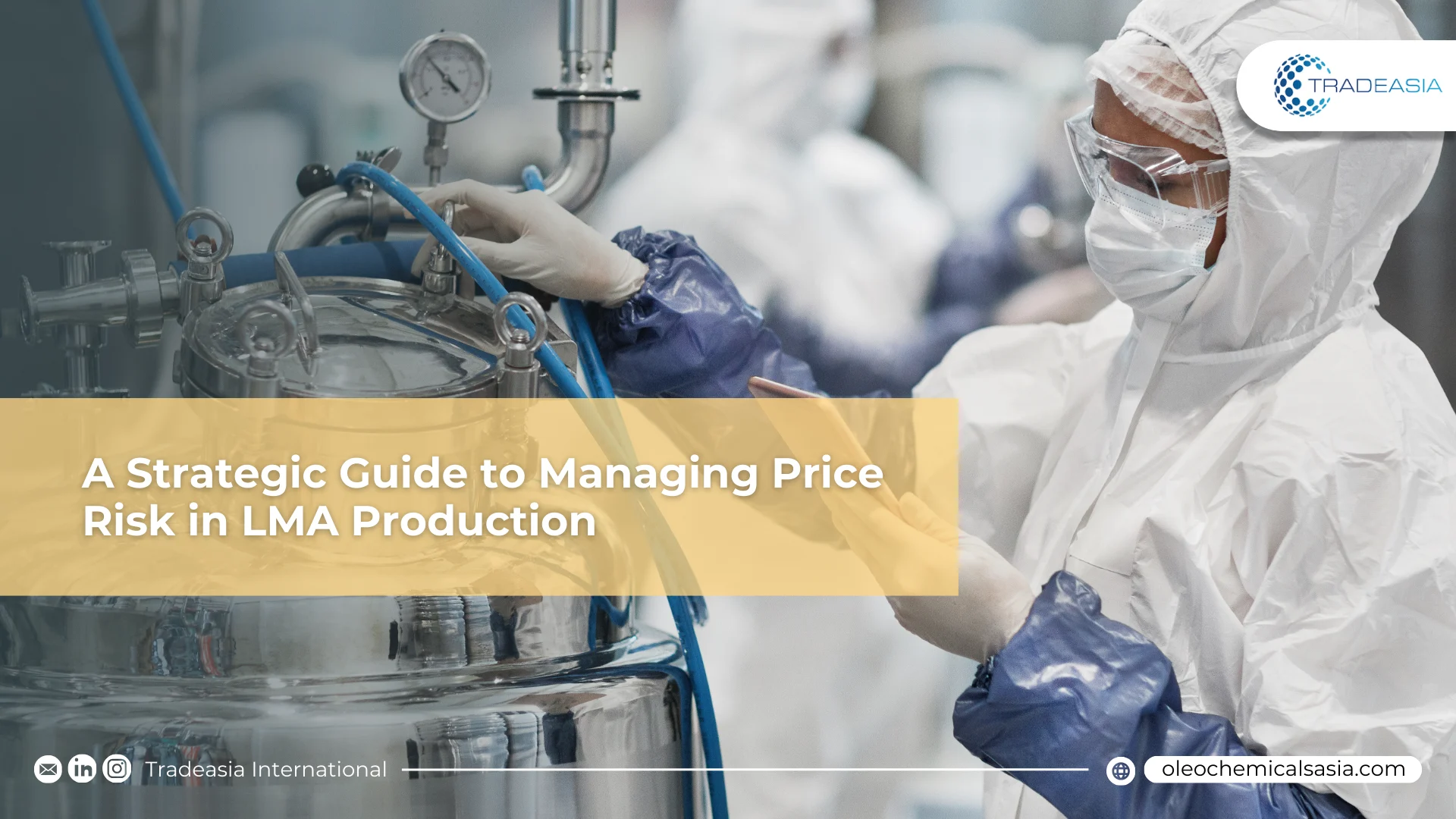A Strategic Guide to Managing Price Risk in LMA Production

Table of Content
- Unpacking the Pressure Points in the PKO Market
- Guarding Against the Crude Oil Competitor and Building Resilience
In the world of Lauryl Myristyl Alcohol (LMA), even the most efficient producers can see their margins evaporate overnight due to feedstock price volatility. With raw material costs frequently making up 60-70% of the final product cost, navigating this unpredictable landscape is not just a best practice—it is essential for survival and success. As of Q3 2025, a complex mix of agricultural, political, and economic factors requires a truly strategic approach to risk management.
Navigating this level of volatility is one of the greatest challenges in the oleochemical industry, turning predictable manufacturing into a high-stakes trading environment. At Tradeasia International, we function as more than a supplier; we are a strategic partner in risk mitigation. We operate on the principle that market intelligence is only valuable when it leads to decisive action, helping our clients secure their supply and protect their margins.
Unpacking the Pressure Points in the PKO Market
The current PKO market is a perfect storm of price drivers. The foundational factor is its tight price correlation with Crude Palm Oil (CPO), which consistently stands at over 0.85, meaning PKO prices are instantly susceptible to CPO market swings. Compounding this, the lingering yield impacts from the 2023-2024 El Niño cycle are still being felt across Southeast Asian plantations, constraining supply. Topping it all off is Indonesia's aggressive B40 biodiesel mandate, a national policy that is siphoning millions of tons of palm feedstock into the energy sector, adding significant price support for the remaining oleochemical-grade PKO.
Guarding Against the Crude Oil Competitor and Building Resilience
While managing PKO’s volatility, businesses must also watch their flank. The cost of synthetic LMA, tied to crude oil prices in the $75-$85 per barrel range, acts as a ceiling on PKO-based product pricing. A sharp dip in crude below the $60 per barrel threshold would make synthetics significantly cheaper, creating a market-wide pricing crisis for oleochemicals. The strategic response must be twofold: firstly, employ financial instruments like futures contracts on the Bursa Malaysia Derivatives (BMD) to hedge against price swings. Secondly, adopt a blended sourcing model that combines stable long-term contracts with agile spot market purchases. This is how resilience is built.
Sources:
-
Analysis of Oleochemical Price Drivers
-
Palm Oil Futures and Market Data - Bursa Malaysia Derivatives (BMD)
-
Global Commodity Market Intelligence - Reuters

Leave a Comment